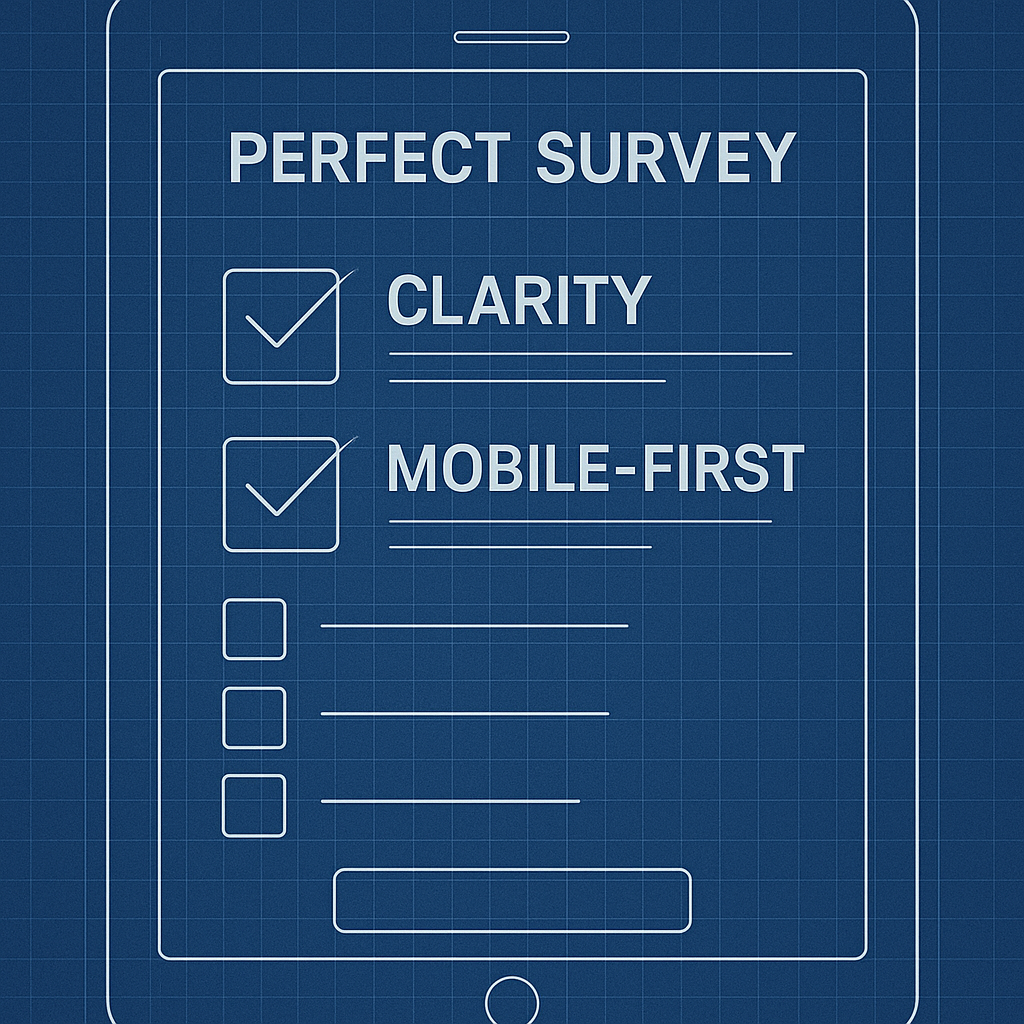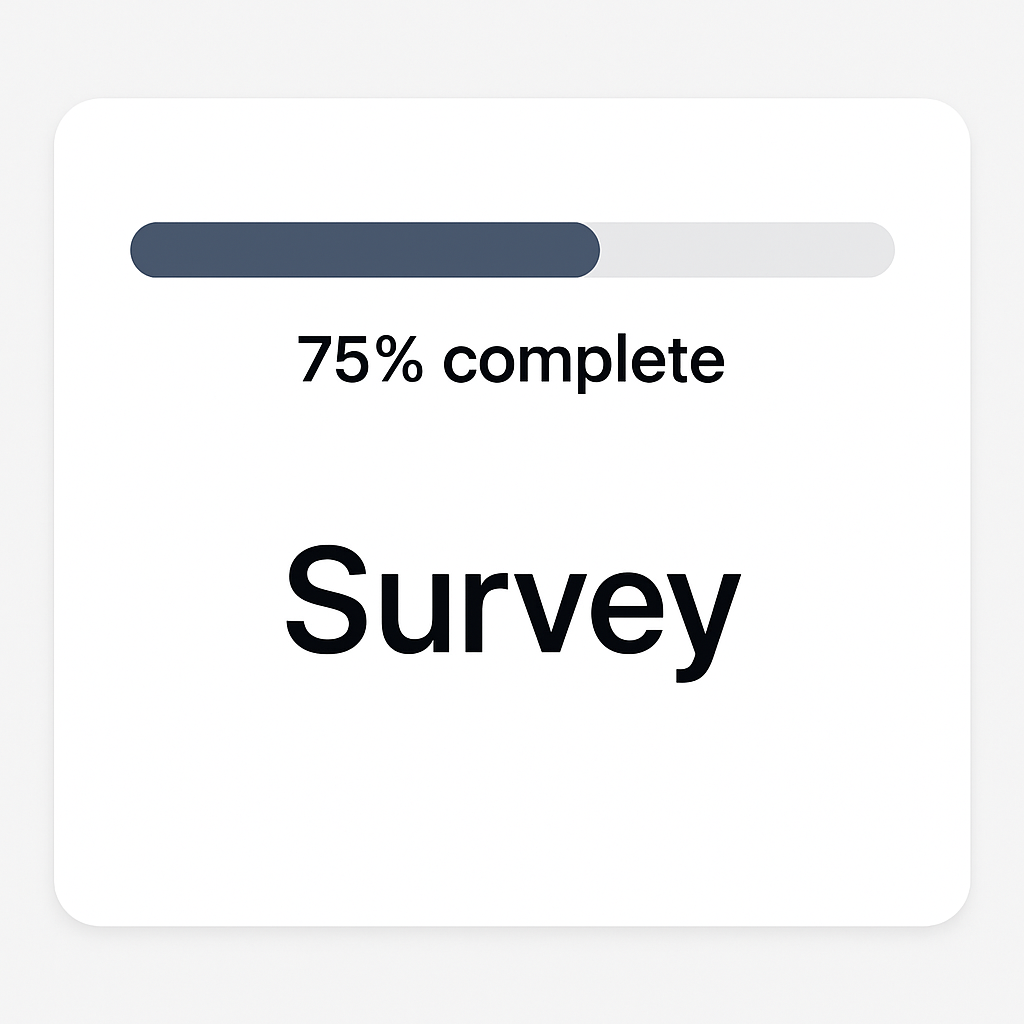10 Survey Design Best Practices for Forms That Actually Get Responses
Low response rates aren't just a number; they're a sign of a broken conversation. You've spent hours crafting the perfect questions, only to be met with silence. The hard truth is that most surveys fail before they're even sent because their design ignores the user. According to the Pew Research Center, declining response rates are a major challenge, making quality survey design more critical than ever. Bad design doesn't just get you fewer responses; it gets you bad data.
The problem is that most form builders are still stuck in the past, creating digital versions of paper forms. They're clunky, impersonal, and a chore to fill out. At FormLink.ai, we got tired of this, which is why we're rebuilding forms from the ground up with AI.
This guide cuts through the noise. We'll give you 10 no-nonsense, actionable best practices to improve your survey design, boost your response rates, and get the quality data you need to make decisions. These are the rules we live by, born from years of building products and seeing what actually works.

Table of Contents
- Start with a Single, Clear Goal
- Respect Their Time: Keep It Short and Focused
- Create a Logical, Conversational Flow
- Write Clear, Unbiased Questions
- Choose the Right Question Types
- Design for Thumbs: Mobile-First is Non-Negotiable
- Show Progress, Not Pain
- Use Incentives Strategically (and Ethically)
- Always Run a Pilot Test
- Close the Loop: Analyze and Act on the Data
1. Start with a Single, Clear Goal
Before you write a single question, state your primary objective in one sentence. If you can't, you're not ready. Don't try to boil the ocean. A survey that tries to measure customer satisfaction, gather product feedback, and qualify leads will fail at all three.
- Bad Goal: "We want to learn about our customers." (Too broad)
- Good Goal: "We want to measure customer satisfaction with our new checkout process to identify the single biggest point of friction." (Specific, measurable, actionable)
As indie hackers, we know every action must have a purpose. A clear goal prevents you from adding "just one more question" that dilutes your data and kills your completion rate.
2. Respect Their Time: Keep It Short and Focused
Your survey is an interruption. Respect the user's time by being ruthlessly efficient. Every question should directly serve the goal you defined in step one. If it doesn't, cut it.
A study by SurveyMonkey found that the more questions you ask, the less time respondents spend on each one, leading to lower-quality data. Abandonment rates skyrocket after the 5-minute mark.
Pro Tip: For every question, ask yourself: "What will we do with this information?" If the answer is vague, the question doesn't belong.
3. Create a Logical, Conversational Flow
A good survey feels like a conversation, not an interrogation. Group related questions together and move from broad topics to specific ones.
- Start Easy: Begin with simple, general questions to warm the user up.
- Group Logically: Keep all demographic questions in one section, and all product feedback in another.
- Use Skip Logic: Don't force users to answer irrelevant questions. If a user says they haven't used a feature, don't ask them to rate it. This is where modern tools shine. Unlike clunky builders that make you wrestle with complex rules, FormLink.ai's conversational interface handles this logic naturally.
4. Write Clear, Unbiased Questions
The way you phrase a question can completely change the answer. Your goal is to get the truth, not to confirm your own biases.
- Avoid Leading Questions:
- Bad: "How much did you enjoy our amazing new feature?"
- Good: "How would you rate your experience with our new feature?"
- Avoid Double-Barreled Questions:
- Bad: "Was our support team fast and helpful?" (What if they were fast but not helpful?)
- Good: Split it into two questions: "How would you rate the speed of our support team?" and "How helpful was our support team?"
- Define Jargon: Never assume your audience knows your internal acronyms or technical terms. Define everything on its first use.
5. Choose the Right Question Types
Using the right tool for the job is a core engineering principle, and it applies to questions, too. Don't default to open-ended text boxes for everything.
- Multiple Choice: Best for clear, distinct options.
- Open-Ended: Use sparingly for rich, qualitative feedback. Place them at the end so they don't cause early drop-off.
- Likert Scales: Excellent for measuring sentiment or agreement (e.g., "Strongly Disagree" to "Strongly Agree"). They provide clean, quantifiable data. For a deep dive, check out our guide on 20+ Likert Scale Examples.
6. Design for Thumbs: Mobile-First is Non-Negotiable
Over 60% of surveys are now opened on a mobile device. If your survey isn't designed for a small screen, you've already lost more than half your audience.
A mobile-first approach means:
- Large, tappable buttons.
- Vertical layouts that are easy to scroll.
- No horizontal scrolling or pinch-to-zoom.
- Minimal typing required.
This is another area where traditional forms fail spectacularly. They try to shrink a desktop experience onto a phone, which is just lazy. A truly AI-native form platform like FormLink.ai uses a chat-based interface that feels natural on any device.
7. Show Progress, Not Pain
No one likes a task that feels endless. A progress bar is one of the most effective psychological tools in survey design. It manages expectations and motivates users to finish by showing them the light at the end of the tunnel.
It turns the question "How much longer is this going to take?" into "Oh, I'm almost done." This simple visual cue can dramatically reduce abandonment rates.

8. Use Incentives Strategically (and Ethically)
Incentives can boost response rates, but they're a double-edged sword. The wrong incentive can attract the wrong audience or bias your results.
- Good Incentives: A small discount, a chance to win a larger prize, or access to exclusive content. The key is that the incentive should be relevant to your audience.
- Bad Incentives: Large cash payments can attract "professional" survey-takers who rush through just to get paid, providing garbage data.
- The Best Incentive: Often, the best incentive is intrinsic. If you're asking for feedback on a product they love, the promise of making that product better is a powerful motivator. Frame your request that way.
9. Always Run a Pilot Test
You'd never ship code without testing it. Why would you ship a survey without doing the same?
Before you send your survey to your entire list, send it to a small group of 5-10 people first. Ask them to take the survey and give you feedback on:
- How long did it take?
- Were any questions confusing?
- Did the logic work correctly?
- Were there any technical glitches?
This simple step will save you from the massive headache of discovering a critical error after sending it to thousands of people.
10. Close the Loop: Analyze and Act on the Data
The worst thing you can do after a survey is nothing. Collecting data is not the goal; making better decisions is. When people take the time to give you feedback, they expect you to listen.
- Share the Results: If possible, share a summary of your findings with the participants. It shows you value their input and builds goodwill.
- Take Action: Use the insights to make a tangible change. Whether it's fixing a bug, updating a feature, or improving a process, make sure the feedback leads to action.
- Communicate the Change: Announce the improvements you made based on their feedback. This creates a powerful positive feedback loop and makes them far more likely to respond to your next survey.
Stop Building Surveys. Start a Conversation.
Great survey design isn't about fancy graphics or clever tricks. It's about respecting the user, being clear in your purpose, and building a seamless experience. The old way of building forms—static, clunky, and impersonal—is dead.
The future is conversational. It's about creating interactions that feel human, effortless, and intelligent. This is exactly why we built FormLink.ai. We believe that gathering feedback should be as simple as having a chat.
Ready to build forms that people actually want to fill out?